- Region
- Águilas
- Alhama de Murcia
- Jumilla
- Lorca
- Los Alcázares
- Mazarrón
- San Javier
-
ALL AREAS & TOWNS
- AREAS
- SOUTH WEST
- MAR MENOR
- MURCIA CITY & CENTRAL
- NORTH & NORTH WEST
- TOWNS
- Abanilla
- Abarán
- Aguilas
- Alamillo
- Alcantarilla
- Aledo
- Alhama de Murcia
- Archena
- Balsicas
- Blanca
- Bolnuevo
- Bullas
- Cañadas del Romero
- Cabo de Palos
- Calasparra
- Camping Bolnuevo
- Campo De Ricote
- Camposol
- Canada De La Lena
- Caravaca de la Cruz
- Cartagena
- Cehegin
- Ceuti
- Cieza
- Condado de Alhama
- Corvera
- Costa Cálida
- Cuevas De Almanzora
- Cuevas de Reyllo
- El Carmoli
- El Mojon
- El Molino (Puerto Lumbreras)
- El Pareton / Cantareros
- El Raso
- El Valle Golf Resort
- Fortuna
- Fuente Alamo
- Hacienda del Alamo Golf Resort
- Hacienda Riquelme Golf Resort
- Isla Plana
- Islas Menores & Mar de Cristal
- Jumilla
- La Azohia
- La Charca
- La Manga Club
- La Manga del Mar Menor
- La Pinilla
- La Puebla
- La Torre
- La Torre Golf Resort
- La Unión
- Las Palas
- Las Ramblas
- Las Ramblas Golf
- Las Torres de Cotillas
- Leiva
- Librilla
- Lo Pagan
- Lo Santiago
- Lorca
- Lorquí
- Los Alcázares
- Los Balcones
- Los Belones
- Los Canovas
- Los Nietos
- Los Perez (Tallante)
- Los Urrutias
- Los Ventorrillos
- Mar De Cristal
- Mar Menor
- Mar Menor Golf Resort
- Mazarrón
- Mazarrón Country Club
- Molina de Segura
- Moratalla
- Mula
- Murcia City
- Murcia Property
- Pareton
- Peraleja Golf Resort
- Perin
- Pilar de la Horadada
- Pinar de Campoverde
- Pinoso
- Playa Honda
- Playa Honda / Playa Paraíso
- Pliego
- Portmán
- Pozo Estrecho
- Puerto de Mazarrón
- Puerto Lumbreras
- Puntas De Calnegre
- Region of Murcia
- Ricote
- Roda Golf Resort
- Roldan
- Roldan and Lo Ferro
- San Javier
- San Pedro del Pinatar
- Santiago de la Ribera
- Sierra Espuña
- Sucina
- Tallante
- Terrazas de la Torre Golf Resort
- Torre Pacheco
- Totana
- What's On Weekly Bulletin
- Yecla


- EDITIONS:
 Spanish News Today
Spanish News Today
 Alicante Today
Alicante Today
 Andalucia Today
Andalucia Today
The “Nicolas Salzillo, Il Maestro” museum of the Paso Morado in Lorca
The museum contains pieces relating to the Semana Santa processions in Lorca
Lorca has gained a fully justified reputation for artistic creativity due to the incredible biblical processions of Semana Santa week, the robes, standards and embroideries taking artistic creativity to a new level.
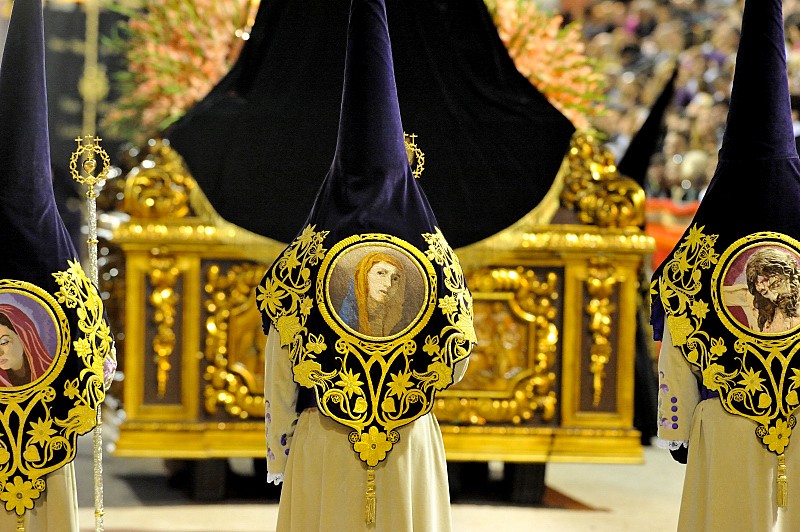
Four brotherhoods work throughout the year to not only maintain and restore their existing collections, but also continue to amplify them, constantly creating new artworks in silk and gold thread, amongst them the museum of the Paso Morado which takes its name from the most important sculptural piece in its collection; The Last Supper by Nicolás Salzillo, father of Baroque master sculptor Francisco Salzillo.
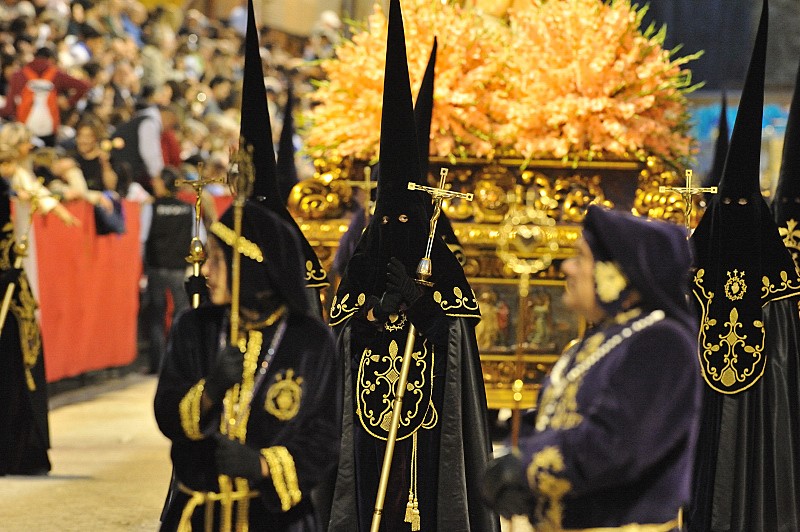
The “Nicolás Salzillo, Il Maestro” museum in Lorca contains not only the first known work by the sculptor after he moved from his native Italy to Murcia in 1699, but also many of the most prized possessions of the Cofradía del Santísimo Cristo del Perdón, the Paso Morado.
The Semana Santa (Easter week) events in Lorca have been awarded the status of Item of International Tourist Interest and the embroideries of Lorca are also currently candidates for UNESCO Intangible Cultural Heritage of Humanity status.
The Cofradía del Santísimo Cristo del Perdón does not include the dramatization of biblical events in its contributions to the events of Semana Santa,but the brotherhood does subscribe to the tradition of elaborate and exquisite embroidery as an essential part of its heritage, and this and the religious sculptures it owns form the basis of the exhibits in the museum. The name by which it is most commonly known, the “Paso Morado” is due to the colour of the tunics worn by the penitents, or Nazarenos, which is a deep purple in colour.
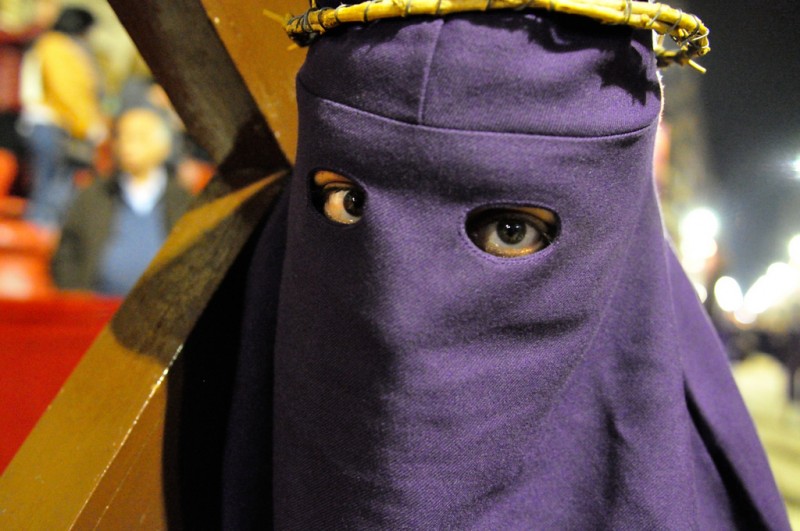
The Paso Morado begins its Semana Santa week activities at midnight on the eve of Ash Wednesday when the figure of Cristo de la Misericordia is carried down from the Calvario (the calvary), a little known but beautiful location overlooking the city of Lorca below it, to the Iglesia del Carmen, where it remains until midnight on Thursday when it participates in the nocturnal penitential Vía Crucis, following the stations of the cross, the candlelit procession concluding in the Calvario, where the figure of Christ is returned to the chapel in which it resides throughout the year.
The main procession for the brotherhood is on Maundy Thursday afternoon, when they hold the solemn and serene “Procesión del Perdón”, starting at the Iglesia Parroquial de Nuestra Señora del Carmen, and on Good Friday morning hundreds of penitents in purple tunics accompany the figures of Cristo del Perdón, La Dolorosa and San Juan Evangelista to the church of El Cristo de la Misericordia in a Vía Crucis.
The Paso Morado also participate in the biblical processions, although as penitents, and without biblical elements.
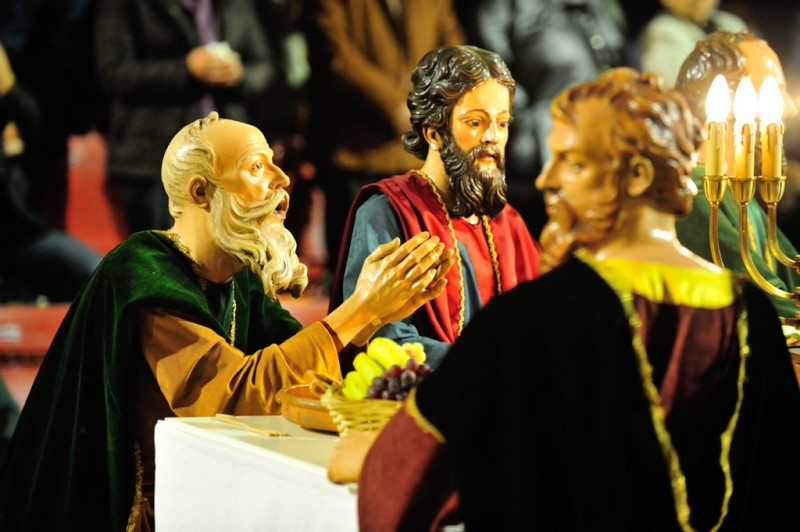
The history of the Paso Morado in Lorca
The origins of the Cofradía de la Santísima Cristo del Perdón lie in the early 17th century, since when the Vía Crucis has been held every Friday of Lent and in Easter Week. These events are unique and end on Monte Calvario, a hill just outside the city which is also known as “Lorca’s Jerusalem”.
But at that time the organization was known as the Hermadad de la Misericordia y de la Caridad, and from 1759 the tradition was carried on by the Hermandad del Cristo del Socorro, a situation which continued until the temporary suspension of the Semana Santa processions in Lorca during the Spanish Civil War (1936-39).

It was not until after the war that the brotherhood was re-funded under the advocation of the Santísimo Cristo del Perdón, when the “Paso Morado” became the first brotherhood in the whole of the Region of Murcia to restore the annual Easter celebrations, and in 1940 the statue of the Nazareno by Roque López was included for the first time.
The tableau of the Last Supper by Nicolás Salzillo was purchased from the “Morados” in the city of Murcia in 1763, who replaced it with "The Last Supper" by the son of Nicolás Salzillo, Francisco Salzillo, and has been one of the most emblematic in the Lorca Semana Santa processions ever since.
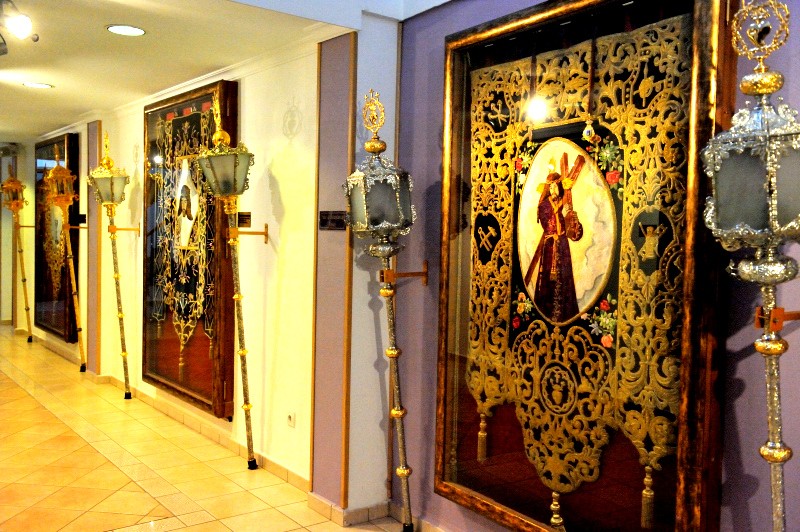
The home of the Paso Morado museum
The museum of the Paso Morado is on Calle Nogalte, almost next door to the 18th-century Iglesia del Carmen which is the religious seat of the brotherhood. Although many of the treasures belonging to the Paso Morado are kept inside the church, the museum, which was opened in 2002, offers not only a chance to view the main embroideries but also insights into the daily life of the brotherhood.
The museum is inside an old restored two-story house at the southern end of the old city centre of Lorca, occupying 900 square metres of floor space: the exhibition area is on the ground floor, while administrative and storage facilities – including the 400 or so crosses carried by members of the Paso Morado during processions – are upstairs.
The exhibits
Although the embroidered banners, flags, standards, cloaks and tunics are rightly included as a part of the rich tradition of exquisite embroidery in Lorca, the Paso Morado is also proud of its religious sculptures. The prime example is the representation of the Last Supper by Nicolás Salzillo, dating from 1700, which parades complete with a table laden with fruit, candles, wine and bread.
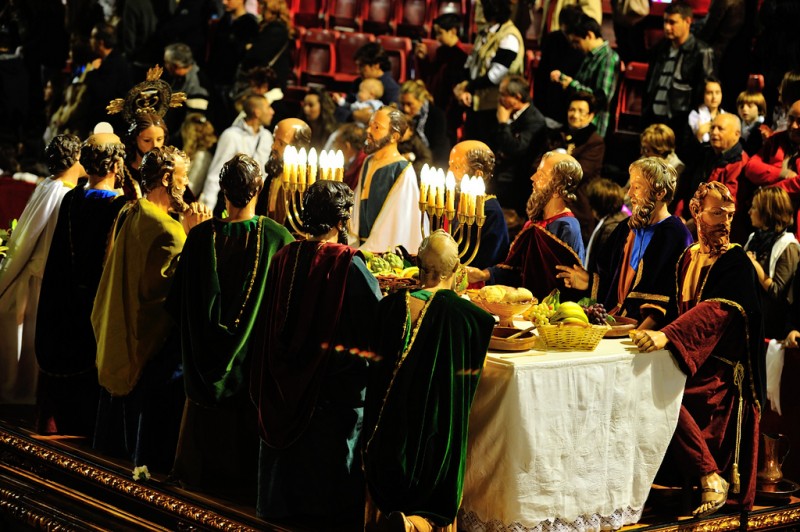
The Last Supper is constructed using the format of "imágenes de vestir", which is a format designed to minimise the original cost of purchasing such a large-scale sculptural piece, as only the heads, hands and feet are sculptured, the bodies of the disciples sharing the last supper dressed in fabric. Only nine of the images are the originals by Nicolás Salzillo, the remainder replacments by José Jerique.
Very few original sculptures from the eighteenth century survived the ravages of the Spanish Civil War, during which thousands of sculptural works were thrown onto bonfires in the streets, churches set on fire and religious artworks destroyed across Spain.
The brotherhood is fortunate to own another original figure amongst its collection in the form of the Santísimo Cristo del Perdón, which was sculpted by Roque López, who was a student of Francisco Salzillo, in 1787.
Other images include the Santísimo Cristo de la Misericordia by Isabel Biscar (1944,) María Santísima de la Piedad by Antonio García Mengual (1982) and the Dolorosa of Monte Calvario which is attributed to Roque López, but was restored by Manuel Carrillo in 1942 after sustaining considerable damage during the Civil War.
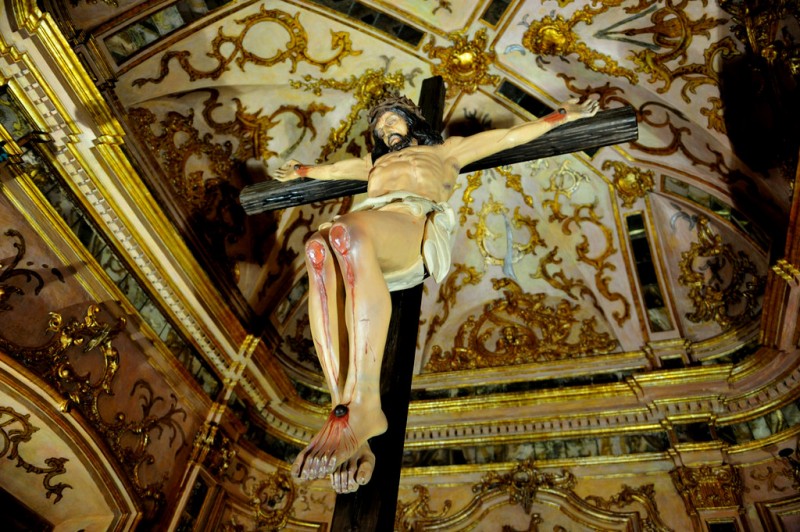
The embroidered items are those which are featured in the main procession held by the brotherhood during Semana Santa:
- The “Guión” or leading standard
- The Roman Centuria of Golgotha
- Roman drum and cornet band
- Standard of the Santísimo Cristo del Perdón
- Nazarenes of the Santísimo Cristo del Perdón
- The figure and tableau of the Santísimo Cristo del Perdón
- The “Bandera de Gala” flag
- The standard of the Santísima Virgen de la Piedad
- Nazarenes of the Santísima Virgen de la Piedad
- The figure and tableau of the Santísima Virgen de la Piedad
- The Nazarenes of “Las Cinco Llagas”
Visitors to the museum can see many of the items featured in the spectacle, including the hoods worn by the Nazarenes of the Virgen de la Piedad, whose sculpture (by Antonio García Mengual) is kept in the Iglesia del Carmen.
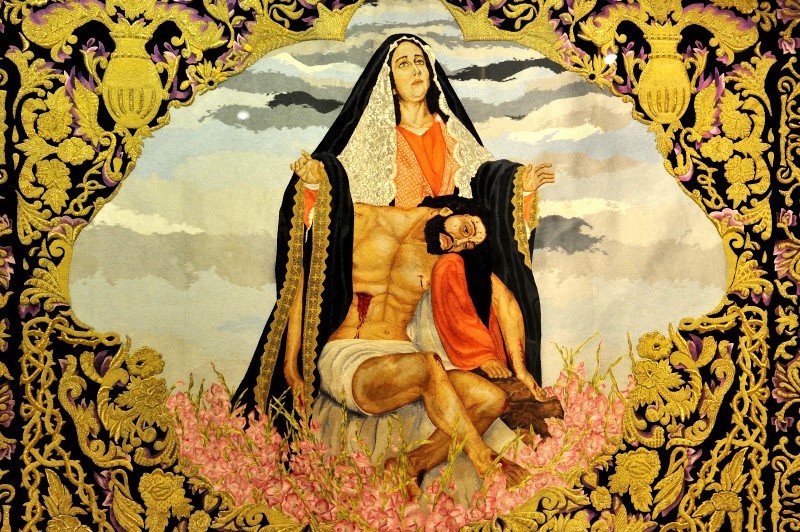
Also on display is the standard of the Virgen de la Piedad, with minutely detailed silk and gold thread embroidery designed and overseen by Francisco Martínez Coronel: underneath the image of the Virgin with Christ lying dead in her arms are the figures of San Juan and Mary Magdalene, framed by thorns.
Another of the figures on view is that of the Cristo del Socorro by Isabel Bizcar Cuyás, which is the image carried along the Vía Crucis.
The museum also contains the cloak of La Dolorosa, the statue and tunic of the Cristo del Perdón, the standard of the chalice, a Roman captain’s tunic, the flag of the brotherhood and the uniforms and embroideries of the Nazarenes, while in a side room are the Last Supper by Nicolás Salzillo, the standard of the Santa Faz and the tunic formerly worn by the figure of the Cristo del Perdón.
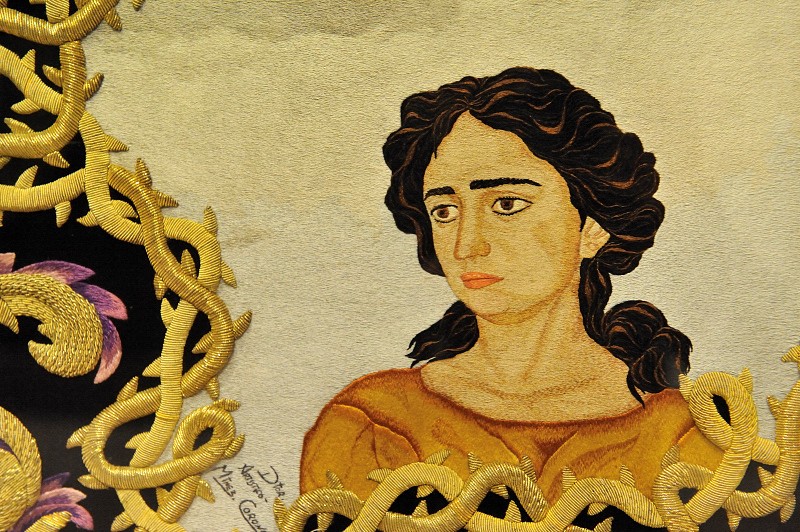
Nicolás Salzillo
The sculptor known in Spain Nicolás Salzillo was born Nicola Salzillo in Italy in 1672, and learnt his craft in the workshop of Marco Aniello Perrone. But in 1699 he journeyed to Murcia, where he was to remain for the rest of his life as a contemporary of the great Nicolás de Bussy.
He married Isabel Alcaráz shortly after arriving in Murcia, and business went well for him, enabling him to open his own workshop: it was here that his son Francisco Salzillo, who was born in 1707, took his first steps towards the greatness he was later to achieve.
Nicolás Salzillo’s first known work after he arrived in Murcia was the “Paso de la Cena”, the tableau of the Last Supper which is paraded through the streets of Lorca every year during Semana Santa, and which dates from the year 1700. Few others have been definitively attributed to him, but those which have include the figure of San Felipe, which is held by the Fundación Espí in Lorca, and various others in the cities of Cartagena and Murcia.
He is also credited with the decoration which stands behind the choir in the former Collegiate Church of San Patricio in the Plaza de España in Lorca.
Nicolás Salzillo died in Murcia in 1727.
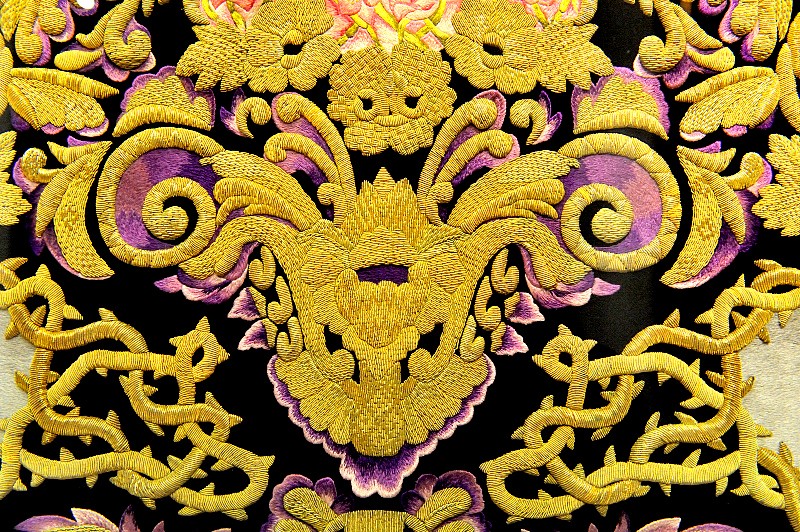
Visiting the Museo de Bordados del Paso Morado
Opening hours: the museum is open to the public from Tuesday to Friday between 11am and 1pm and 6pm and 8.30pm (December 2021). On Saturdays the museum is only open during the mornings from 11am to 1.30pm. The museum is closed on Sundays and most bank holidays.
Admission fee: 1.50€ per head, reduced rates 1.10€.
To book group visits contact the Paso Morado by email at pasomoradolorca@gmail.com
Address: Museo de Bordados del Paso Morado, Calle Nogalte, 43, 30800 Lorca
Telephone: 902 400 047 / 968 467 959
Web: www.pasomorado.com
Tickets for the Semana Santa biblical parades
Tickets are sold by the Paso Azul and Paso Blanco directly via their web pages or from the offices and museums of the Cofradías.
The seat prices vary according to the position within the stands and in the street, with the cheaper tickets being those closest to the entry and exit points of the processions and the higher-priced seats located in the centre of the stands. This is because the horses and carriages run set distances, so those seats in the middle have a better view of the more spectacular runs. Click for the subject heading of Semana Santa Lorca to see the current ticketing information and further details about Semana Santa in Lorca.
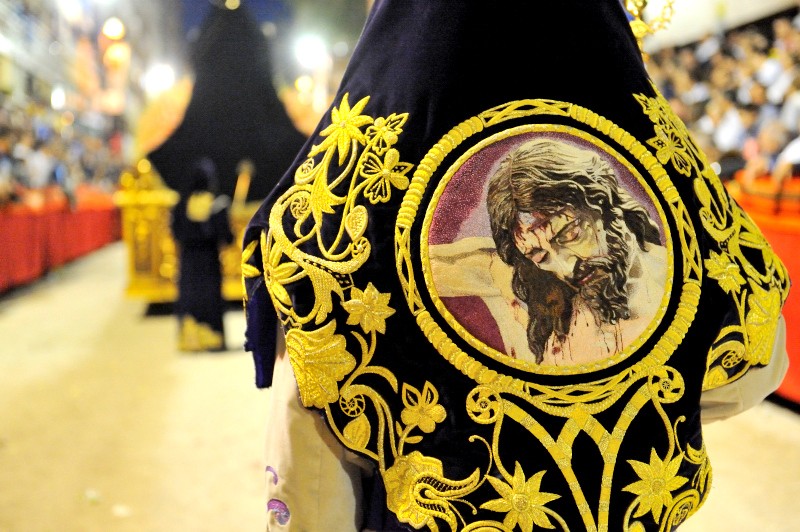
Combined entry discount (wristbands are temporarily unavailable, December 2021)
Those planning to visit several locations in Lorca are strongly advised to purchase a wristband (pulsera) from the Tourist Information Office, as it offers superb value, particularly for those able to spend time visiting all of the principal attractions. Priced at only 6.50 euros, it is valid for entrance to the La Merced visitors’ centre, Lorca castle and the four main Semana Santa and embroidery museums (the MuBBla belonging to the Paso Blanco, the Museum of the Paso Azul, the MuPaEn belonging to the Paso Encarnado and the Nicolás Salzillo “Il Maestro” museum of the Paso Morado.
In addition, significant discounts are offered on the guided tour of the Jewish quarter and the synagogue in the castle and the wristband is valid for one entry to each, and without an expiry date, so visitors can return at their leisure to visit each of the attractions over a period of time. It's fantastic value! Click for wristband information
Click for further information about visiting Lorca, including what's on agenda, what to visit, opening hours, tourist information etc: LORCA TODAY
Cartagena
El Carmoli
Islas Menores and Mar de Cristal
La Manga Club
La Manga del Mar Menor
La Puebla
La Torre Golf Resort
La Union
Los Alcazares
Los Belones
Los Nietos
Los Urrutias
Mar Menor Golf Resort
Pilar de la Horadada
Playa Honda / Playa Paraiso
Portman
Roldan and Lo Ferro
San Javier
San Pedro del Pinatar
Santa Rosalia Lake and Life resort
Terrazas de la Torre Golf Resort
Torre Pacheco
Aledo
Alhama de Murcia
Bolnuevo
Camposol
Condado de Alhama
Fuente Alamo
Hacienda del Alamo Golf Resort
Lorca
Mazarron
Puerto de Mazarron
Puerto Lumbreras
Sierra Espuna
Totana
Abaran
Alcantarilla
Archena
Blanca
Corvera
El Valle Golf Resort
Hacienda Riquelme Golf Resort
Lorqui
Molina de Segura
Mosa Trajectum
Murcia City
Peraleja Golf Resort
Ricote
Sucina
Condado de Alhama
El Valle Golf Resort
Hacienda del Alamo Golf Resort
Hacienda Riquelme Golf Resort
Islas Menores and Mar de Cristal
La Manga Club
La Torre Golf Resort
Mar Menor Golf Resort
Mazarron Country Club
Mosa Trajectum
Peraleja Golf Resort
Santa Rosalia Lake and Life resort
Terrazas de la Torre Golf Resort
La Zenia
Lomas de Cabo Roig

CAMPOSOL TODAY Whats OnCartagena SpainCoronavirusCorvera Airport MurciaMurcia Gota Fria 2019Murcia property news generic threadWeekly Bulletin





































